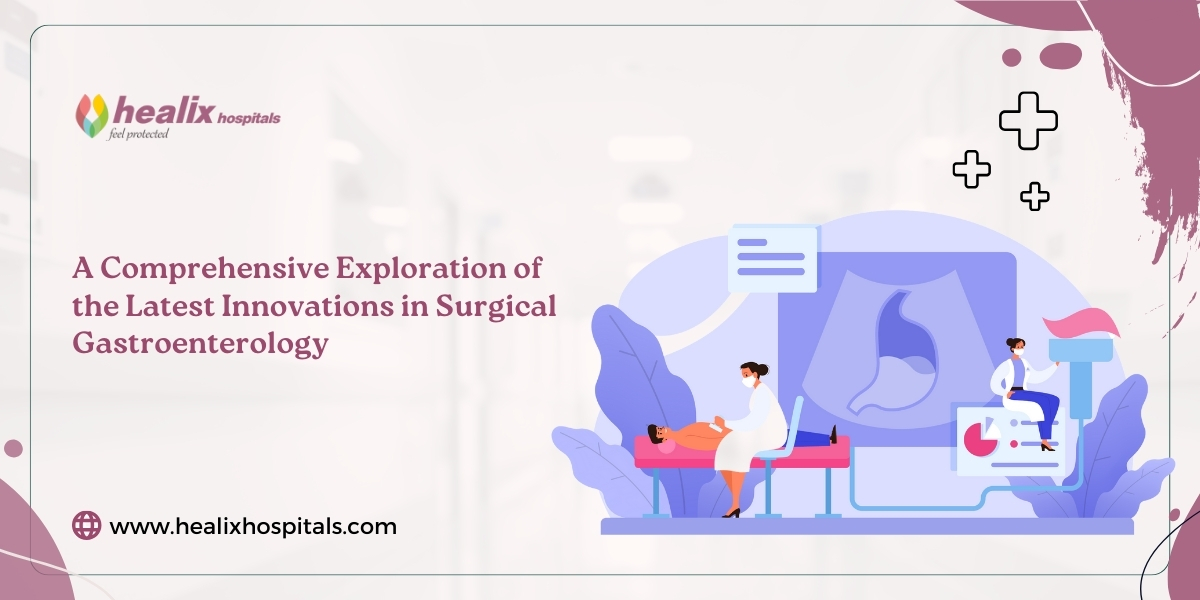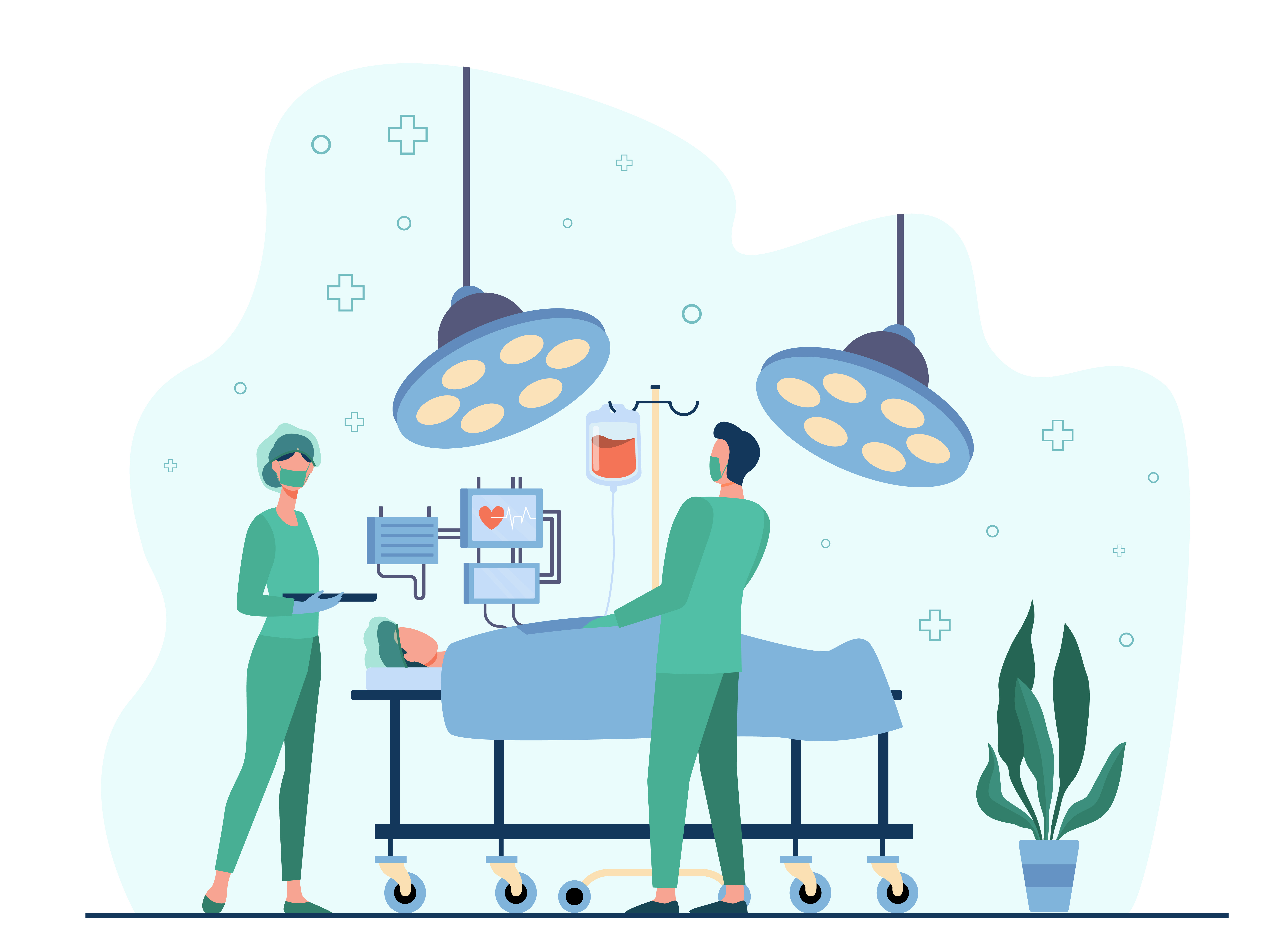

Did you know that by 2025, an estimated 70% of all gastrointestinal surgeries in India are expected to be performed using minimally invasive techniques (MIS)?
This statistic highlights the rapid advancements and growing adoption of MIS in India, which translates to significant benefits for patients:
- Faster recovery times: Studies show that patients undergoing MIS procedures in India have shorter hospital stays compared to open surgery, typically by 2-4 days.
- Reduced costs: Minimally invasive procedures often require less equipment and shorter hospital stays, potentially leading to lower overall costs for patients.
- Improved cosmetic outcomes: Smaller incisions associated with MIS result in less scarring, offering a cosmetic advantage for patients.
- Minimized pain: MIS generally involves less tissue manipulation, leading to reduced postoperative pain and discomfort.
In the dynamic landscape of medical science, surgical gastroenterology emerges as a beacon of continual innovation. At the forefront of healthcare, Healix Hospitals takes pride in presenting the forefront of Surgical Gastroenterology advancements. From nuanced minimally invasive techniques to precision-driven robotic surgery, these breakthroughs are fundamentally transforming the paradigm of gastrointestinal healthcare.
1. Minimally Invasive Surgery: Redefining Gastrointestinal Care
Advancements in minimally invasive surgery stand as a revolutionary stride in addressing gastrointestinal disorders. Characterized by smaller incisions and reduced recovery times, patients now experience heightened comfort with minimized pain and scarring. These techniques, beyond their cosmetic benefits, contribute significantly to shorter hospital stays, optimizing overall patient outcomes.
Benefits of Minimally Invasive Surgery (MIS):
- Reduced hospital stays: A 2020 study in JAMA Surgery found that patients undergoing MIS for colorectal cancer had a 2.4-day shorter hospital stay compared to open surgery. (Source: )
- Faster recovery times: A 2021 study in Surgical Endoscopy found that patients who underwent MIS for cholecystectomy (gallbladder removal) had a shorter median recovery time than those who had open surgery (4.5 days vs. 7 days). (Source:)
- Reduced pain and scarring: MIS typically involves smaller incisions, leading to less pain and scarring compared to open surgery.
2. Laparoscopic Procedures: Gold Standard in Surgical Gastroenterology

Laparoscopic procedures have ascended to the gold standard in surgical gastroenterology. This methodology, involving small incisions and camera-assisted visualization, translates into faster recovery times, diminished postoperative pain, and a mitigated risk of complications. The patient-centric benefits of this approach underscore its pivotal role in modern gastrointestinal surgeries.
Benefits of Laparoscopic Procedures
- More than 90% of gallbladder removals in the US are now performed laparoscopically due to its safety and effectiveness. (Source: American College of Surgeons)
- Laparoscopic surgery has been shown to reduce the risk of complications compared to open surgery for various procedures, including colon resection and hernia repair. (Source: National Institutes of Health)
3. Robotic Gastrointestinal Surgery: Precision Elevated to Unprecedented Heights
Robotic surgery has ushered in a new era of surgical precision. The seamless integration of robotic systems empowers surgeons at Healix Hospitals to perform intricate gastrointestinal procedures with unparalleled dexterity and accuracy. This results in a tangible reduction in postoperative complications, promising improved outcomes for patients.
Benefits of Robotic Gastrointestinal Surgery
- Improved precision and dexterity: Robotic surgery allows for tremor-free movements and magnified visualization, potentially leading to better outcomes. (Source: Journal of Robot Surgery)
- Shorter operative times: A 2022 study in Surgical Laparoscopy, Endoscopy & Percutaneous Techniques found that robotic surgery for rectal cancer had shorter operative times compared to laparoscopic surgery.
4. Endoscopic Advancements: Transforming Diagnostics into Therapeutics
Endoscopic procedures have evolved beyond diagnostics, becoming therapeutic interventions of considerable significance. Healix Hospitals employs advanced endoscopic techniques for tumor removal, bleeding disorder treatment, and the management of diverse gastrointestinal conditions. This minimally invasive approach ensures optimal patient outcomes and quicker recovery times.
Benefits of Endoscopic Advancements
- Early detection of cancer: Endoscopy plays a crucial role in early detection of colorectal cancer, which can significantly improve survival rates. (Source: American Cancer Society)
- Effective treatment of various conditions: Endoscopic procedures can be used to treat various conditions such as bleeding ulcers, bile duct stones, and polyp removal.
5. Surgical Innovations: Advancing Safety and Efficacy
Healix Hospitals remains at the forefront of surgical innovation, introducing cutting-edge techniques and technologies. From pioneering suturing methods to innovative tissue sealing technologies, these advancements bolster the safety and efficacy of gastrointestinal surgeries, setting new benchmarks in patient care.
Benefits of Surgical Innovations
- Improved suturing methods: New suturing techniques can reduce bleeding and tissue damage, leading to faster healing. (Source: Society of American Gastrointestinal and Endoscopic Surgeons)
- Innovative tissue sealing technologies: These technologies can minimize blood loss and shorten operative times. (Source: Cleveland Clinic)
6. Digestive System Surgery: Tailored Precision for Improved Outcomes
Recent trends in digestive system surgery highlight a shift towards personalized treatment plans. Surgeons at Healix Hospitals leverage state-of-the-art technologies to tailor surgical approaches based on individual patient needs. This approach results in improved outcomes and a notable reduction in complications, marking a significant stride in patient-centric care.
Benefits of Digestive System Surgery:
- Improved quality of life: By addressing underlying digestive issues like chronic pain, obstruction, or bleeding, surgery can significantly improve a patient's ability to eat, digest food, and participate in daily activities.
- Enhanced long-term outcomes: Early intervention and minimally invasive techniques employed in modern surgery often lead to faster recovery, reduced risk of complications, and better long-term prognosis for numerous digestive diseases.
7. Gastrointestinal Disorders: A Holistic Approach to Optimal Care
Addressing a myriad of gastrointestinal disorders is a pivotal aspect of surgical gastroenterology at Healix Hospitals. The discussed advancements ensure that patients receive comprehensive and optimal care, ranging from inflammatory bowel diseases to complex malignancies.
8. Surgical Technology Breakthroughs: Augmented Reality and Beyond
Healix Hospitals seamlessly integrates the latest surgical technologies, including augmented reality and 3D imaging. These breakthroughs not only enhance the precision and efficiency of procedures but also contribute to ongoing medical research, solidifying the hospital's commitment to pushing the boundaries of surgical innovation.
Benefits of Surgical Technology Breakthroughs:
- Increased precision and accuracy: Advanced technologies like robotics and 3D imaging enhance surgeons' capabilities, leading to minimally invasive procedures with smaller incisions, reduced tissue damage, and faster healing.
- Improved safety and efficacy: Breakthroughs in surgical tools and techniques minimize complications, blood loss, and operative times, ultimately translating to better patient outcomes and faster recovery.
9. Advanced Endoscopy Techniques: Expanding Diagnostic and Therapeutic Horizons
The advent of advanced endoscopy techniques has expanded the diagnostic and therapeutic capabilities of gastroenterologists at Healix Hospitals. These techniques enable early detection and intervention, resulting in improved patient prognosis and paving the way for enhanced treatment strategies.
Benefits of Advanced Endoscopy Techniques:
- Minimally invasive diagnosis and treatment: Advanced endoscopes allow for minimally invasive procedures, reducing discomfort and recovery time compared to traditional surgery, while offering effective diagnosis and treatment for various digestive conditions.
- Early detection and intervention: These techniques enable earlier detection of abnormalities and prompt intervention, potentially improving prognosis and disease management for conditions like early-stage cancers.
10. Surgical Navigation Systems: Precision Navigation for Safer Procedures
Incorporating surgical navigation systems enables surgeons to navigate complex anatomies with unparalleled precision. This technology not only enhances the accuracy of procedures but also reduces the risk of complications, ensuring a safer surgical experience for patients undergoing gastrointestinal surgeries at Healix Hospitals.
Benefits of Surgical Navigation Systems:
- Enhanced surgical guidance: Navigation systems provide surgeons with real-time 3D visualization of complex anatomy, leading to greater precision during procedures, minimizing risks and optimizing outcomes.
- Improved safety and efficiency: Accurate navigation reduces the risk of complications associated with navigating intricate anatomical structures, leading to safer and more efficient surgical procedures.
11. Gastroenterological Interventions: A Comprehensive Approach to Gastrointestinal Issues
The field of gastroenterological interventions has undergone a paradigm shift at Healix Hospitals. Offering a comprehensive range of interventions, from endoscopic stenting to intramural injections, the hospital addresses a wide spectrum of gastrointestinal issues, ensuring a tailored and effective approach to patient care.
Benefits of Gastroenterological Interventions:
- Minimally invasive and targeted: Compared to traditional surgery, interventions like stenting, balloon dilation, and injections offer less invasive solutions, resulting in faster recovery, reduced pain, and fewer complications.
- Broader treatment options: These interventions address a wider range of conditions beyond those requiring formal surgery, offering effective management for issues like bleeding ulcers, bile duct blockages, and early-stage tumors.
12. Precision Surgery: The Hallmark of Healix Hospitals' Approach
Precision surgery remains the hallmark of Healix Hospitals' approach to gastrointestinal care. The seamless integration of advanced imaging and robotic technologies empowers surgeons to perform intricate procedures with utmost accuracy, minimizing damage to surrounding tissues and optimizing patient outcomes.
Benefits of Precision Surgery:
- Improved outcomes and minimized damage: Robotics, advanced imaging, and specialized techniques allow for highly precise procedures, leading to smaller incisions, reduced tissue damage, and significantly improved long-term patient outcomes.
- Tailored approach and personalized care: Precision surgery enables surgeons to customize procedures based on individual anatomy and disease characteristics, optimizing treatment effectiveness and minimizing unnecessary interventions.
13. Intraoperative Imaging: Real-time Visualization for Informed Decision-Making
Intraoperative imaging plays a pivotal role in ensuring real-time visualization during surgical procedures. Healix Hospitals invests in state-of-the-art imaging systems, allowing surgeons to make informed decisions and optimize patient outcomes, thereby setting new standards for precision and efficacy.

Benefits of Intraoperative Imaging:
- Real-time guidance and enhanced accuracy: Intraoperative imaging tools provide surgeons with real-time visualization of internal structures during surgery, leading to more precise procedures, reduced risk of complications, and improved surgical decision-making.
- Minimized complications and improved safety: By enabling surgeons to visualize critical structures and potential risks in real-time, intraoperative imaging helps reduce complications like bleeding or nerve damage, ensuring a safer surgical experience for patients.
Latest Trends in Surgical Gastroenterology: Paving the Path to Future Excellence
As we venture into the future, emerging trends in surgical gastroenterology encompass the utilization of artificial intelligence for surgical planning, the development of targeted therapies, and the exploration of innovative biomarkers for early disease detection. These trends promise to reshape the landscape of surgical gastroenterology, offering new avenues for improved patient care and outcomes.
| Trend | Description | Numbers (India) | Potential Impact |
| Growing Adoption of MIS | Increased demand for minimally invasive procedures due to faster recovery, reduced costs, and improved cosmetic outcomes. | - 70% of all gastrointestinal surgeries are expected to be minimally invasive by 2025. | - Faster recovery times, reduced costs, improved patient satisfaction. |
| Increasing Penetration of Robotic Surgery | Growing adoption of robotic-assisted surgery for its enhanced precision, flexibility, and potential for improved outcomes. | - Number of robotic surgery units projected to reach 200 by 2025. | - Improved surgical precision, potentially better long-term outcomes. |
| Focus on Early Detection and Personalized Medicine | Emphasis on early diagnosis through advanced endoscopy and personalized treatment plans based on individual needs and genetics. | - Increased screening for colorectal cancer is expected to contribute to early detection rates. | - Early diagnosis leading to better treatment outcomes, personalized plans improving effectiveness. |
| Integration of Advanced Technologies | Adoption of technologies like AI, AR, and 3D printing for surgical planning, guidance, and personalized implants. | - AI-powered platforms assisting surgeons in preoperative planning. | - Improved surgical planning, potentially fewer complications and better outcomes. |
| Focus on Improving Accessibility and Affordability | Initiatives to make advanced care more accessible through telemedicine, insurance coverage expansion, and government programs. | - Telemedicine consultations for gastrointestinal concerns showing significant growth. | - Increased access to specialized care, particularly in rural areas. |
>>> Also Read : The Future Of Surgical Gastroenterology: Trends And Predictions
Conclusion: A Commitment to Excellence in Gastrointestinal Healthcare
Healix Hospitals continues to lead the way in Surgical Gastroenterology, embracing advancements that redefine patient care and surgical outcomes. The integration of minimally invasive techniques, robotic assistance, and innovative technologies ensures that patients receive the highest standard of care.
The journey towards excellence in gastrointestinal healthcare is ongoing, and Healix Hospitals remains steadfastly committed to staying at the forefront of these groundbreaking advancements.
>>> Reach out to us for any query: Contact us